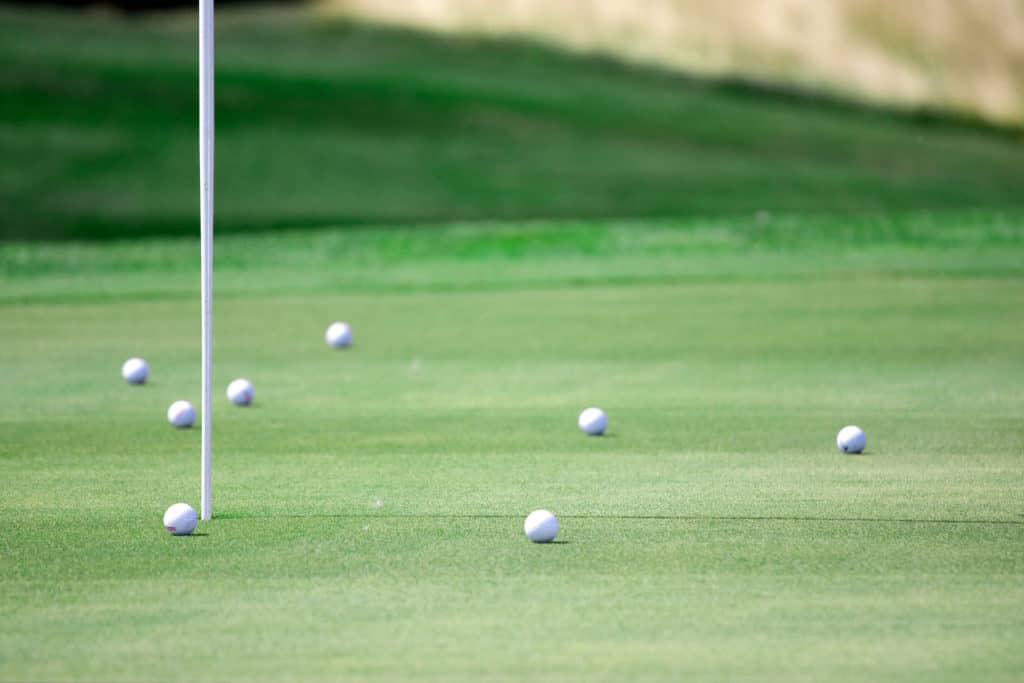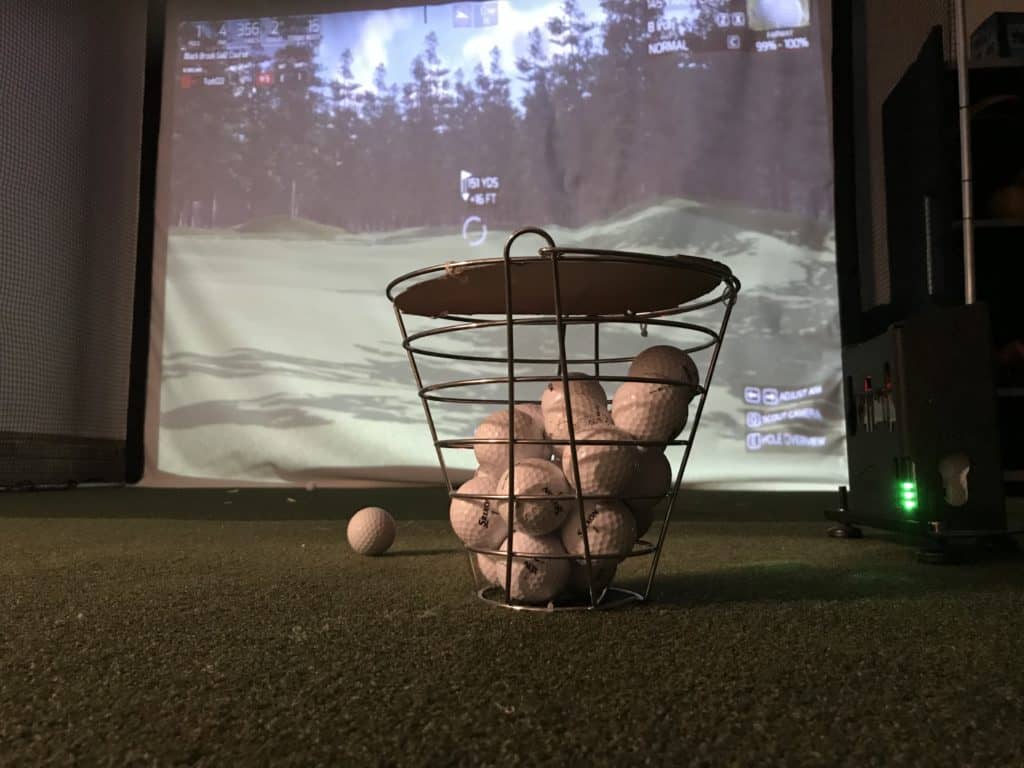The hips will rotate and turn to closed in the backswing and then rotate open in the downswing. Impact is the key for any swing and the amount of degrees your hips should be open will vary from golfer to golfer based on match ups with other elements of the swing. Different instructors will teach different degrees of openness at impact.
Do you ever find yourself confused about the role of the hips in the golf swing?
It is easy to understand why this might happen.
There are many great golf instructors, but their approach on using the hips in the golf swing can vary from instructor to instructor. The good news is that you can find which instructor best matches your current swing or a swing you would like to have in the future.
The next steps would then be to follow that instructor and utilize his or her system to reach your full potential in the golf swing.
The key for any golfer is to find a swing that works for them.
Oftentimes this will start with finding an instructor that has a quality system that matches your communication style and the ability to make certain movements that they promote in the golf swing.
My personal experience is that I once followed the Stack and Tilt instructors, then shifted to more of a Shawn Clement or Mike Malaska style swing and now find myself following the George Gankas approach to golf.
I find the George Gankas swing to be the most consistent and powerful, but I did play some awesome golf with the previous instructors as well.
Update: More and more instructors are promoting a complete rotation on the backswing and the downswing. The days of resisted hip rotation are gone! We have returned to the many of the greatest swings of the past that allowed free hip movement!

What Is The Proper Hip Rotation In The Golf Swing?
Below, I will dive into the following questions related to hip rotation in the golf swing:
- What are the different methods for hip rotation in the golf swing
- How to increase hip rotation in the golf swing
- Drills for hip rotation in the golf swing
- How to measure what is best for your game
- Final Verdict: My Recommendation
What Are The Different Methods for Hip Rotation in the Golf Swing?
Let’s face it, there are many great golf swings. There are also weird golf swings that work. There is no perfect model to follow. This is a major philosophy of mine and one that keeps me exploring the many different approaches to the golf swing. I have spent time highlighting these swings below:
Of the instructors that I have learned a great deal about through studying video and lessons that they provide, there are two extremes. George Gankas and Jim Ventos are the two extremes.
Others I have learned about include Shawn Clement, Mike Malaska and Mike Bender.
George Ganakas
The first, who promotes getting open and allowing the hips to be a main driver in the swing is George Gankas. He believes in match ups and making sure that the rotation and the club face coming through are matching up.
I have found his swing to be helpful in gaining consistency through the club face being more stable. I have less reliance on my hands being required to make sure I have the proper timing.
What I appreciate most about George Gankas is his approach with matchups and not promoting there is only one way to swing.
Jim Venetos
On the other end of the spectrum is Jim Venetos who promotes stillness in the golf swing, with a focus on staying still and allowing the arms to work. He wants the golf to be almost square at impact and allow the left side to drive the swing.
He wants the right side almost removed from the golf swing and keep it a backhanded swing.
Shawn Clement
Somewhere in the middle is a Shawn Clement, who has more of a target based approach, where the focus is on making an athletic motion in the golf swing and focusing on throwing the club down the fairway.
He doesn’t spend time talking about positions or hips being certain degrees open. Instead, he has a saying “out of the way, out of the way.” This refers to out of the way on the backswing and then out of the way on the downswing.
He just isn’t going to put a number on how open you should be, but there is definitely an openness to the hips in his downswing.
(See video below on the Shawn Clement approach with proper hip rotation).
Mike Malaska
The fourth instructor is Mike Malaska, who is also more in the middle. He spends a lot of time focusing on how the hands work and “directing the momentum.”
More recently he has spent time talking and teaching about how the hips push way on the backswing and downswing. He uses an example video from Tiger Woods where he show the hips moving back and away.
This helps prevent early extension and gives plenty of space for the arms and hands to work in the swing.
Mike Bender
A fifth instructor is Mike Bender. He spends a significant amount of time promoting the arms being the main driver of the golf swing. He wants the golfer to try to accelerate the head of the golf club as fast as he or she can. The body will then react to the arms firing and support in the downswing.
Here is a list of golf instructors that I have reviewed:
Summary of Hip Rotating and Teaching Methods
Each instructor promotes a different focus in the swing.
George Gankas spends plenty of time talking about “his move” or preferred movement with the lower body. The focus is for sure on the lower body and having it serve as the engine of the swing.
The club face stability through impact is superior to the other methods in my opinion. Recently, I purchased the membership at George Gankas site and have learned a great deal about his swing and benefits of the move that he promotes with the legs and the club stability that can happen.
However, the others are all fantastic teachers as well. One of my golf buddies followed Mike Malaska religiously and the swing has worked great for him. It helps keep the swing simple and promotes the directing of the momentum. Malaska is a phenomenal communicator.
Shawn Clement is wonderful as well with his target based approach and allowing gravity to drive the swing. He is a good guy and comes across as sincere in everything that he does.
Mike Bender has an awesome instagram page where he shows many of the lessons he provides. The swing speed that can be created by the arms driving the swing can be impressive!

How To Increase Hip Rotation in the Golf Swing
I would recommend doing a number of drills to help you get into the proper position. My number one piece of advice is to understand what impact should look like. Too many golfers, especially high handicappers, believe they just need to get back to the start position.
When the reality is that you must get your hips somewhat open. The amount that they need to be open will be dependent on what system or instructor you are following.
Drills are an awesome way to train and engrain a swing movement. It takes many reps. Find your place to get these reps in that are needed.
Drills for hip rotation in the golf swing
Drill #1: This is a drill that only requires a half swing. It starts with the golfer setting up in the impact position and then taking the club slight back and then swinging through. This is a great drill because it teaches you the proper impact position.
Check out this video below starting at the 1:30 mark:
Drill #2: Program your impact position. This swing is more a full swing, but once again with a focus on where you need to be at impact. This is the Mike Malaska approach to impact and where the hips should be.
Drill #3: Perpetual Motion drill by Shawn Clement. He provides a deep overview on his thoughts on the golf swing and how the hips should move. This is a quality video that really show his beliefs on the swing and get the proper hip rotation in the golf swing. He loves to talk about cutting the grass.
How To Measure What Is Best For Your Swing?
I also believe in experimentation and figuring out what is best for your game and your body type.
The great thing about golf in today’s era is that golfers have access to some wonderful technology that can allow them to experiment and figure out what is best for their game. I highly recommend a launch monitor to help you measure what amount of hip rotation is best for your game.
In today’s golf world, the access to affordable launch monitors is a complete game changer. Not only can one help you set up you experiment with different swings and philosophies, but it can also help you map your bag by knowing the distance you carry each club.
One could try out the different methods of instruction found above and use the launch monitor to measure for success. Some areas you will want to monitor include:
- Start line consistency
- Amount of side spin
- Ball speed
- Carry distance
A Launch Monitor is a great addition to your practice sessions even beyond determining what hip movement is best for your game.
Stop guessing on your ball and club data and get the immediate feedback that you need to improve your game. Club selection and the make up of your bag is often overlooked by many amateurs.
The professional golfers of today all have access to some great technology including launch monitors to help measure their swing and know their numbers. Can an amateur use this same or similar technology for game improvement?
Yes, absolutely and I would highly recommend it.
Even if you aren’t going to go all out and build an indoor golf simulator like I did (see below), you can still pick up a launch monitor at a reasonable price and use it in your indoor net or taking to the course or driving range with you!
Knowing numbers like spin rate, ball speed, spin axis and other key information is vital to your growth. Sharing these numbers with your instructor can be helpful and help with equipment selection as well.
I would recommend one of the three launch monitors listed below:
Final Verdict: My Recommendation
I would recommend checking out all of the different instructors and approaches listed above. If I had to choose one, which is difficult to do, I believe that for long term success George Gankas is the best.
However, if you are a senior golfer, I would recommend Mike Malaska. If you are someone that struggles with positions and are tired of trying to hit certain positions in your swing then Shawn Clement might be perfect for you.
My main recommendation for George Gankas is based on the club face stability that is created through the ball. In my past experience, I would often slide my hips too far forward, which would lead me to an early release and then stalling a bit right after impact.
With the George Gankas approach I am able to turn left and keep the club face moving through impact and not rely on my hands to time everything up.
I have found the George Gankas approach to be powerful and consistent. The impact is impressive and his membership site is extremely thorough.
Follow my journey and review of the George Gankas membership site.
Final Thoughts: My Secret To Golf Improvement
Let’s face it, in order to get really good at golf, we must practice frequently. About three years ago, I made the leap and invested in a golf simulator build for my garage.
I went with a SkyTrak Launch Monitor and the TGC software and can now play over 100,000 courses including Augusta, Pebble Beach, Bethpage Black, Whistling Straits. St. Andrews and many other of the top 100 courses in the world.
This golf simulator setup, which is more affordable that you might imagine, has been a game changer. I can now play golf everyday of the year regardless of rain, snow, cold weather or time of day.
I can practice or play rounds of golf. I can stand in the 11th fairway at Augusta and with the auto-rewind feature I am able to practice my approach shots from various differences.
It is worth checking out through Rain or Shine Golf as they offer some incredible packages along with financing offers that are difficult to beat.
Some direct links to Rain or Shine Golf for pricing and financing:

Take Action – What You Can Do Today to Get Better
What does this mean for you? I believe in the following recipe to get better:
1 – Improve your motion in the golf swing by identifying a golf instructor. Here are some options:
Here is a list of golf instructors that we have reviewed:
2 – Train to swing faster and improve your swing speed. Here are some options:
Looking to gain more Speed and Distance in your swing. Two Options:
3 – Understand course strategy and work to break through your next barrier. Here is a series on breaking through:
We have provided guides on how to break 100, 90, 80 and 70. Check out more below, if interested.
4 – Practice Frequently
Did you know that I build a golf simulator in my garage and have played over 500 rounds of golf on my SkyTrak system? It has been a game changer and one worth checking out. Here are some of my other posts on golf simulators frequently asked questions:
- Is a Golf Simulator Worth It?
- How to Build a Golf Simulator?
- What is the Best Golf Simulator?
- Golf Simulator Accessories?
- How to Build a Golf Simulator for under $7000
- Top 11 Reasons to Buy a SkyTrak
- How to Build a Golf Simulator for Under $1000
- Why Build A Golf Simulator?
- What Space is Needed?
- Can A Golf Simulator Improve My Game?
- How Much Does A Golf Simulator Cost?
- Don’t Forget to Check out our 15 best golf swings of all time.
